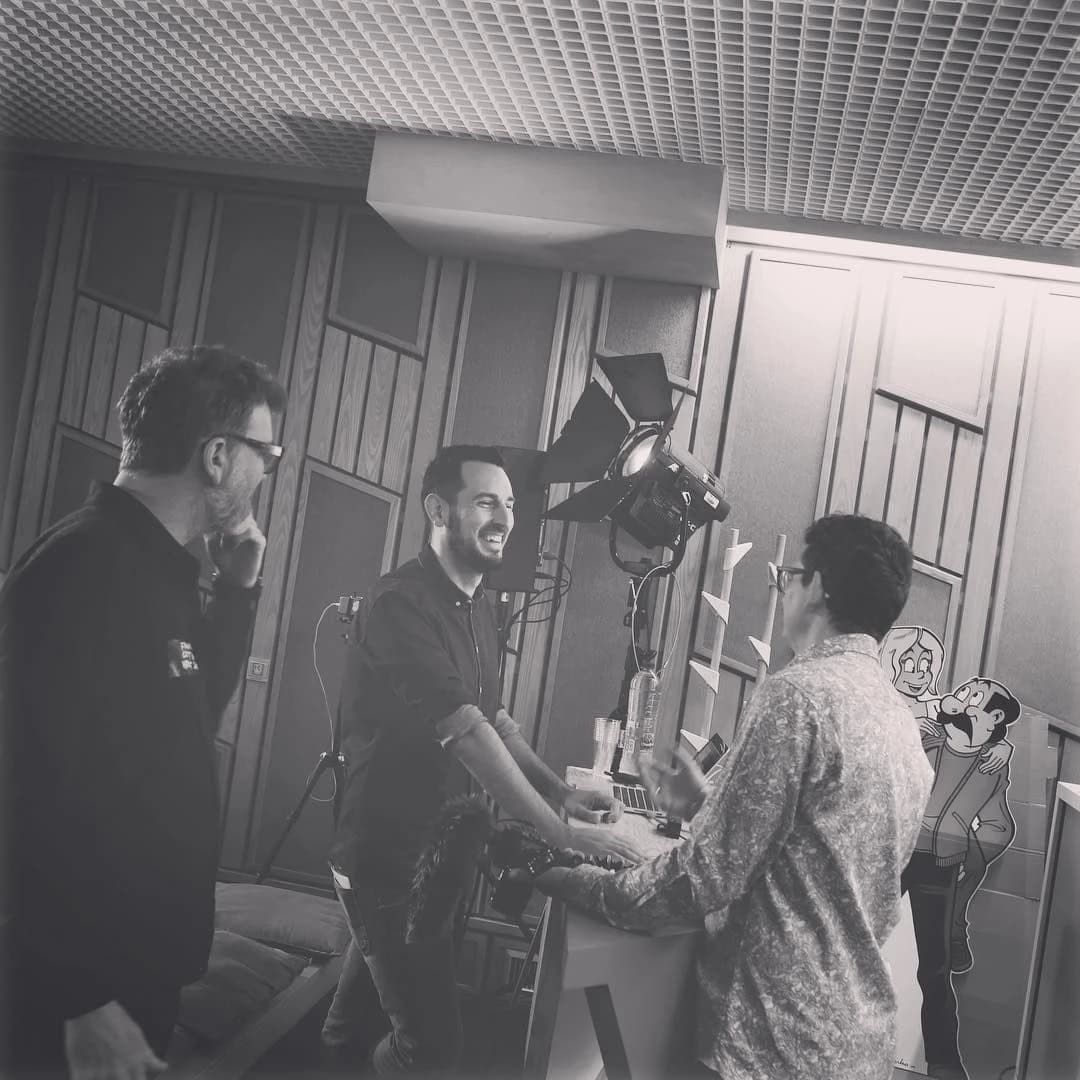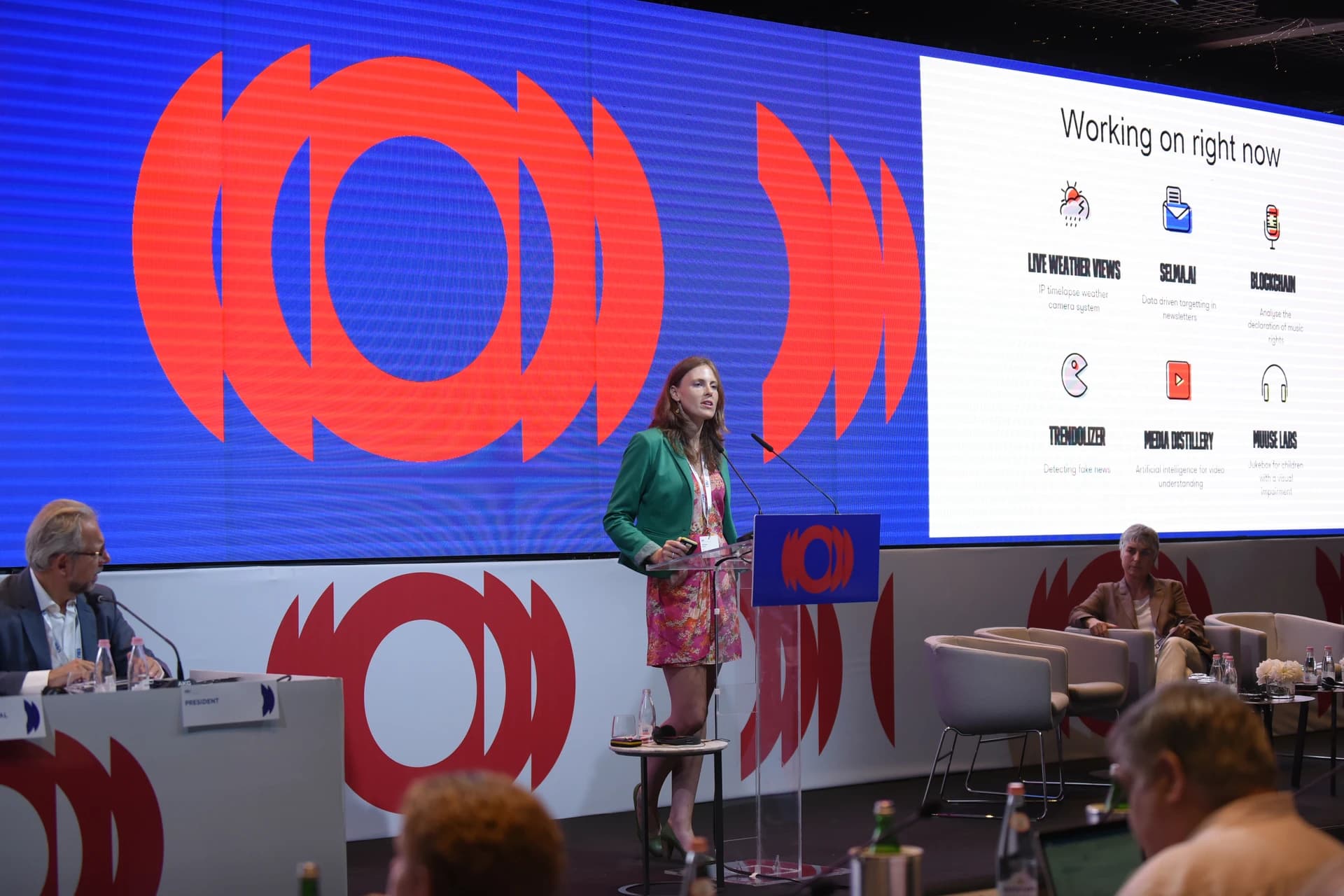
December 23, 2024
10 years of VRT Sandbox: from dark little room to powerful innovation accelerator
In December, VRT Sandbox celebrates its 10th anniversary. As VRT's innovation accelerator, it provides start-ups and young production houses with unique opportunities to develop, test, and scale innovative solutions. Over the past decade, many milestones have been achieved, marking VRT Sandbox as a critical player in media innovation. Head of Sandbox, Peter De Paepe, reflects on the journey of this transformative initiative.
2014: The Beginning of VRT Sandbox
Former Technology Director Mick De Valck once had his own start-up. He wanted to connect his start-up with VRT but found it very difficult. At that time, VRT was a closed and trusted institution. When Mick became CTO, one of his first decisions was to transform VRT into an open house where tech start-ups could knock on our door to collaborate. That door still exists, although with added practicalities like security. Initially, we were assigned a small, dark room at VRT. We got paint from the décor team and spent a day painting ourselves.
The name "Sandbox" originates from a technological term: a sandbox is an isolated testing environment that allows users to run programs or open files without affecting the main system. It’s a safe environment to test and later scale new technologies.
In the years that followed, it was especially important to make it clear that VRT had an open door for those start-ups. Koen Meyskens and Fredo De Smet went to tech festivals, schools and events to raise VRT Sandbox's profile. This is how the first collaborations came about.
2015: Peter Joins the Team
A year and a half after its inception, I joined VRT Sandbox. My role was to transform the Sandbox from a budding initiative into a key innovation tool for VRT. We developed clearer branding and communication that spoke the language of start-ups, helping them understand what we could offer. Internally, we mapped all roadmaps and ambitions across our various brands and digital products, enabling us to align start-ups with our strategic goals.

2018: Launch of the Sandbox Hub
Since start-ups cannot survive in Flanders alone, but have to rely on European or international scale, we went to see if there were any media houses in Europe that were innovating in a similar way with start-ups. In France, for example, we saw exactly the same thing happening with Radio France. VRT Sandbox and RTBF therefore took the initiative to set up a network of broadcasters who all had a Sandbox operation themselves, or were planning to start one up, based on the VRT Sandbox model. This would allow our Flemish start-ups to scale Europe-wide, and at the same time we could learn from each other. On the one hand by sharing start-up cases with each other, and thus knowing which start-up you should or should not test, and on the other hand how to run such a Sandbox. This eventually became the Sandbox Hub, a hub with 34 members, and later an even wider network was created: Future Media Hubs.

2019: Media Invest Vlaanderen
In 2019, VRT, together with PMV (the government’s investment fund), established a fund specifically for media growth companies. This fund, Media Invest Vlaanderen, supports both tech start-ups and emerging production houses. The idea is simple: we invest in start-ups and production houses and support their growth. After a few years, we sell our shares and the profits are put back into the fund, after which we can help new companies grow and thus strengthen the broad media sector. This has already involved six investments in six companies and the sale of one. Flanders is a small market, so this can count.
We have found a good partner in PMV: VRT Sandbox scans and tests start-ups and young production houses. So we know where the talent is, but just as well, when they need capital. PMV complements that with their strength: in-depth analysis of the companies themselves, enabling us to make meaningful investments together.
2020: Launch of STADIEM
Until then, we were working with VRT Sandbox primarily with Flemish tech start-ups. The next step was to look abroad: by collaborating with European scale-ups, which are start-ups that are already slightly older, we could mean even more to VRT. Because with scale-ups, you can bring even more impact and change in the areas where you want to move forward quickly as VRT. Together with 3 partners from Norway, Germany and Estonia, we organised the first European acceleration programme for media start-ups called STADIEM (Startup Driven Innovation in European Media). More than 200 scale-ups from 33 countries applied to participate in the programme. 40 European media players participated in this project and showed interest in working with one or more scale-ups. It was a fantastic roallercoaster that ended last year. Meanwhile, we are looking at how we can continue to bring new punishing scale-ups to VRT in strategic areas such as conversational AI, disinformation and gaming.
2023: Seeds & Growth for Media
We had a successful programme with STADIEM where we were able to help European scale-ups. But we noticed in Belgium that it was becoming increasingly difficult for young media companies and technology start-ups to find a connection in the media. We were keen to do something about this, but the solution could not just come from VRT: it had to come from the whole sector. Together with Medianet Vlaanderen, Thomas More and Future Media Hubs, we built a three-year acceleration programme specifically for young start-ups and school leavers. Here we focused not only on technological start-ups: young content production houses could also participate. So Seeds and Growth For Media is the programme where start-ups get the chance to pitch their creative or technological idea to Flemish media houses to work out a proof of concept together. The second edition was launched in October 2024 where 35 start-ups were selected for the programme.
Not just technology
We have long seen technology and content increasingly merge. For instance, there was a company that had created a game app with very innovative storytelling. With VRT Sandbox, we really are at a crossroads between technology, content and entrepreneurship. We also have strong contacts in the content world, so why not use them?
2025: Looking Ahead
Even though our love for young Flemish and Brussels start-ups and production houses is very strong, we see media primarily as an international game. YouTube, Spotify and TikTok are our biggest competitors today and in the new world of AI they will be Open AI, Meta and Amazon.... Hence, we want to continue to find the strongest start-up solutions in the market to further strengthen VRT. That remains our ultimate ambition, even if we have to travel around Europe to do so. And we don't do that alone: we do that with start-ups, but certainly also with our internal teams at VRT. So to everyone who has dared to stick their neck out in recent years to test something with VRT Sandbox: a big thank you!


